Guest blogging is still one of the most popular link building tactics. It also helps you establish thought leadership, form valuable relationships, and increase brand awareness.
The biggest challenge in guest blogging is getting your pitches accepted on high authority websites. You need to:
Identify targets
Find decision-makers
Demonstrate a relevant portfolio
Pitch an idea that resonates with the intended blog's audience
And even if you do everything right, your guest posts aren't guaranteed to be published.
At Hunter, guest blogging is the key link building tactic that brings us the best results. In 2022, we published 68 guest posts that resulted in 174 backlinks from DR70+ domains. Here, I'll show you the exact tactics we used to get our guest posts featured on highest authority websites in our industry—with the hopes it can help you do the same.
Step 1: Find websites that accept guest posts
The first step of a successful guest blogging campaign is identifying relevant websites that accept guest posts. Most websites don't publicly state whether or not they accept guest posts, but there are clues you can rely on.
Your best bet for finding a sufficient number of qualified websites is to combine a handful of methods. These are the three that have always worked well for me.
Use Google to find relevant sites with a guest blogging policy
You can use Google Search operators and try several variations, such as:
[Your industry] + inurl: "write for us"
[Your industry] + inurl: "contribute"
[Your industry] + inurl: "guest post"
[Your industry] + inurl: "guest post guidelines"

This method works fine if you're just starting with guest blogging. The issue is that the content strategy of these websites revolves around guest posts, meaning everyone can publish on these sites—which minimizes the return on investment.
The best strategy here is to find the gems and skip the rest. Once you get featured on a few websites, pitch to harder-to-get websites. Now, let's move on to my two favorite tactics to find higher quality websites.
Reverse engineer active guest bloggers
The goal is to identify featured guest bloggers' bylines on industry-relevant websites. Most of the time, these websites don't publicly state that they accept guest posts, but since they've already accepted guest posts in the past, there's a chance they'll consider your pitch, too.
The first step is to find websites with an overlapping audience, find out if they publish guest posts, and then identify the authors of those guest posts.
You can use a Google Search like relevant niche + "this is a guest post by" to quickly get full names of featured guest bloggers.
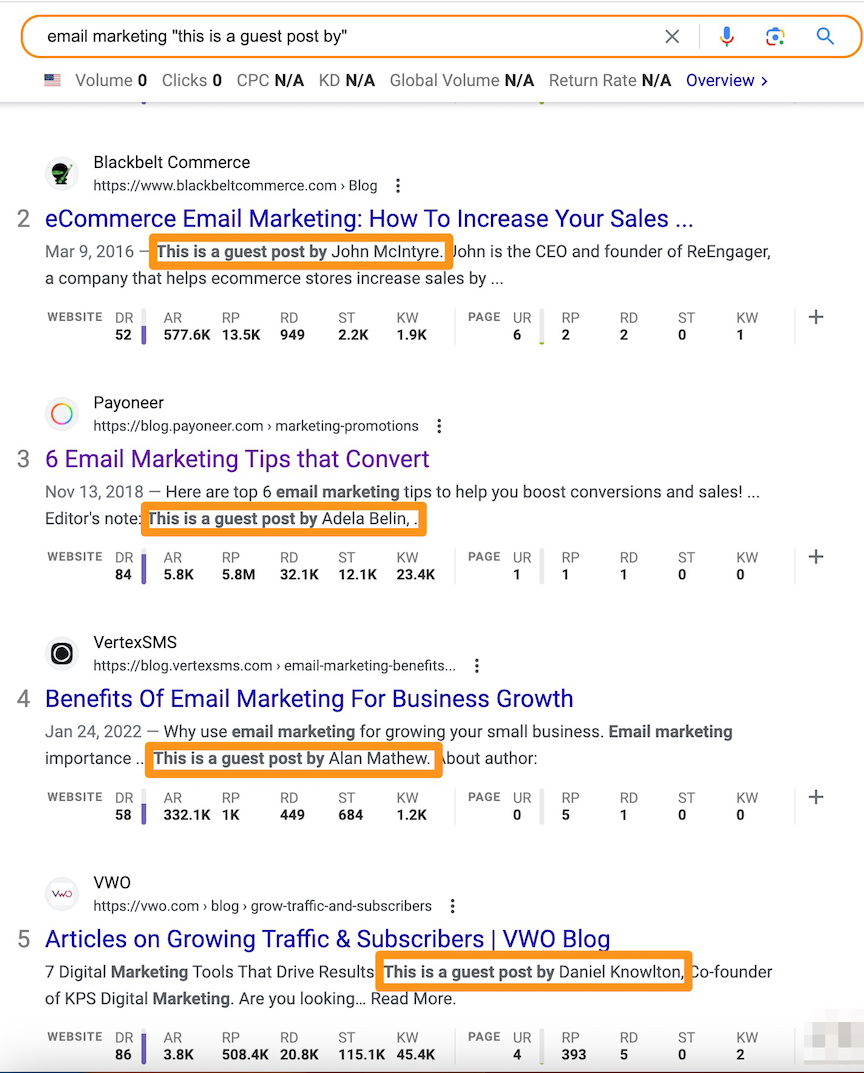
Once you've identified relevant guest post authors, use Google Search operators to find other websites they were published on.
"[Full name]" + "author"
"[Full name]" + "written by"
"[Full name]" + "guest post by"
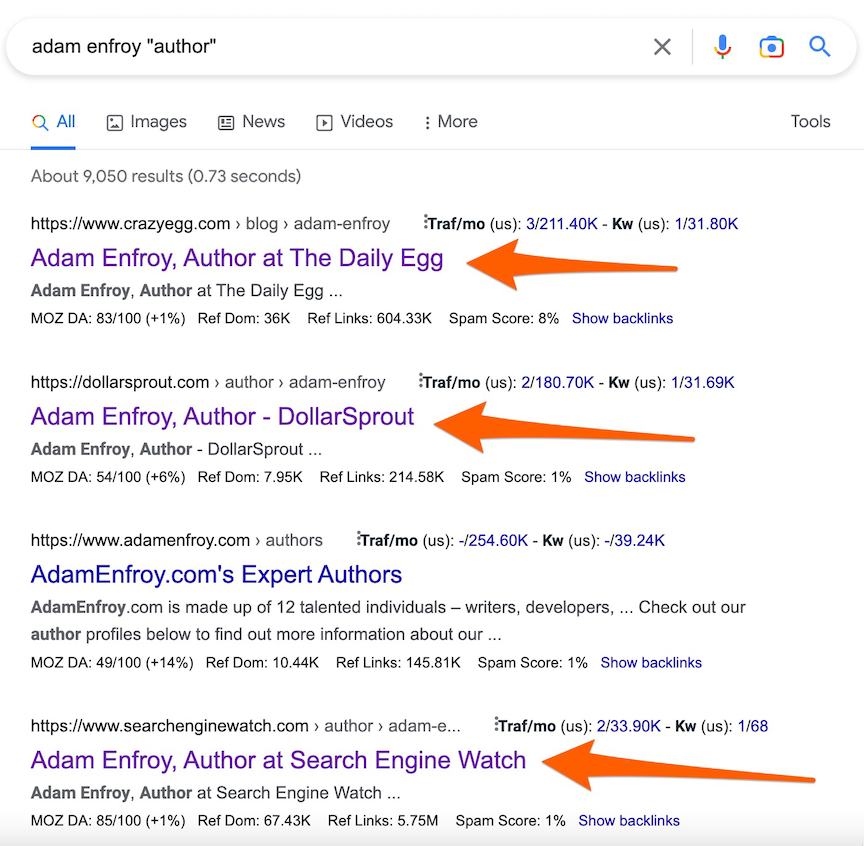
I personally had the most success with the "author" operator, as this query returns the author profiles on websites, giving a better understanding of what content these websites are looking for.
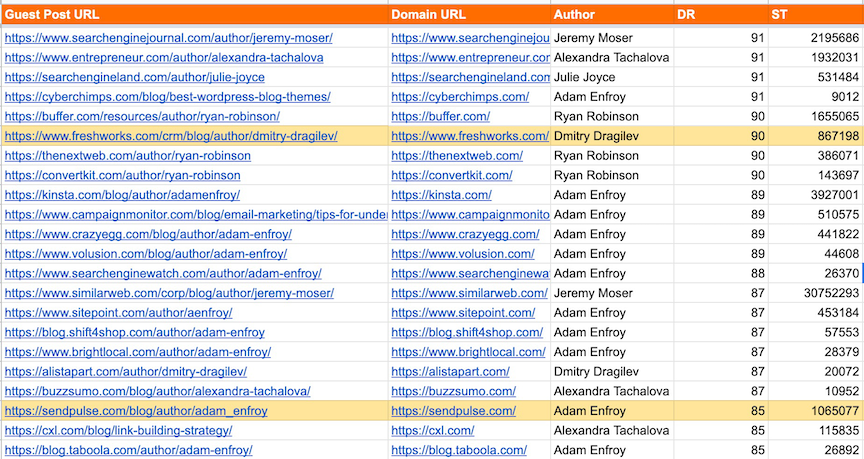
After a quick search on Google, you can get hundreds of relevant targets that published guest posts. I like to enrich the data with Ahrefs' Batch Analysis, where you can add up to 200 domains and get their visibility data in seconds.
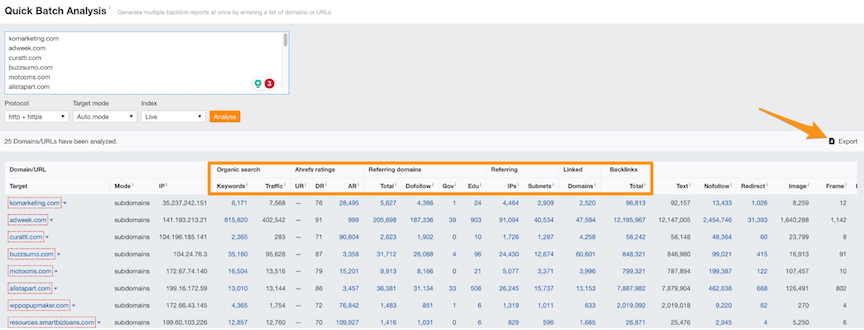
Use Ahrefs Content Explorer
I've found that Ahrefs' Content Explorer is the most effective tool for finding potential websites you can pitch guest posts to. It allows you to identify websites that mention specific keywords in their titles or copy. You can also filter the results using metrics like domain rating (DR), organic traffic (ST), referring domains (RD), and more.
Here are some of my favorite filters when using Ahrefs Content Explorer to find guest post opportunities:
Search for the "keyword" mentioned in the page title
Traffic > 5,000
DR70 and higher
Exclude homepages and subdomains, and only list one page per domain
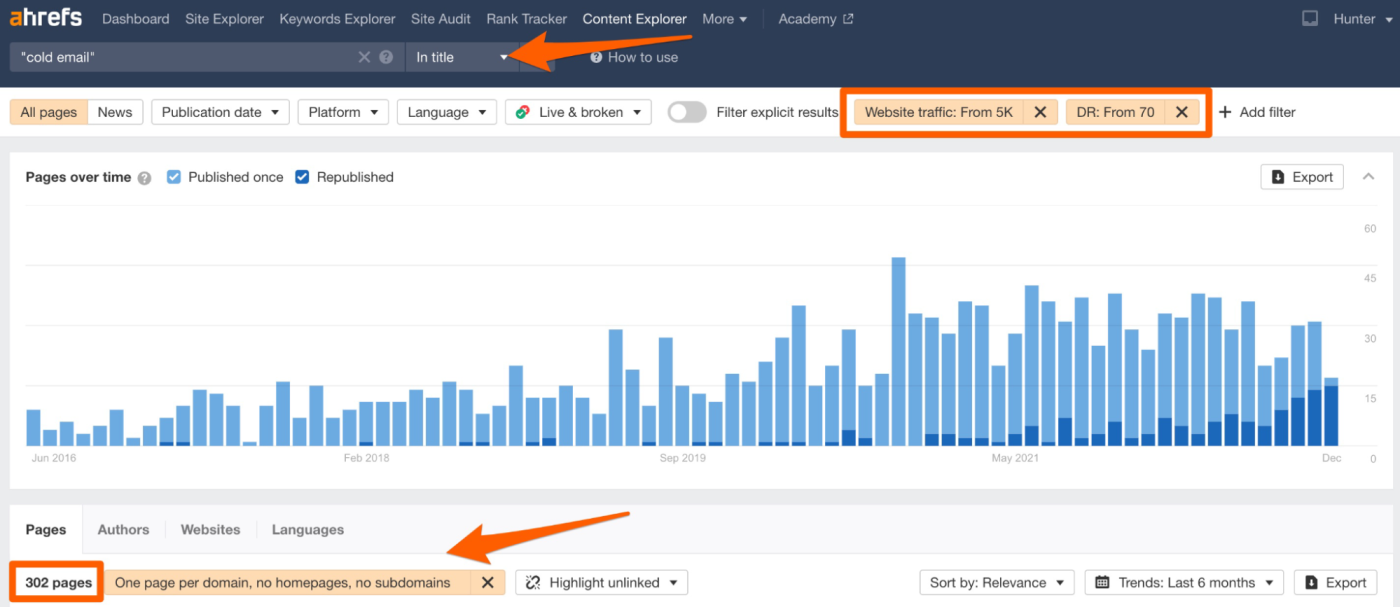
Combining these three prospecting methods can give you hundreds of relevant prospects in less than an hour.
Step 2: Identify key decision-makers
Finding the key decision-makers to pitch can make or break your outreach campaign. These are the people you should focus on:
Editors
Heads of content/content managers
Heads of marketing
Heads of growth/SEO
CEOs/founders (if the number of employees on LinkedIn is less than 5, you're probably safe reaching out to the founders directly)
Navigate to a company profile on LinkedIn, search employees, and filter results by positions.
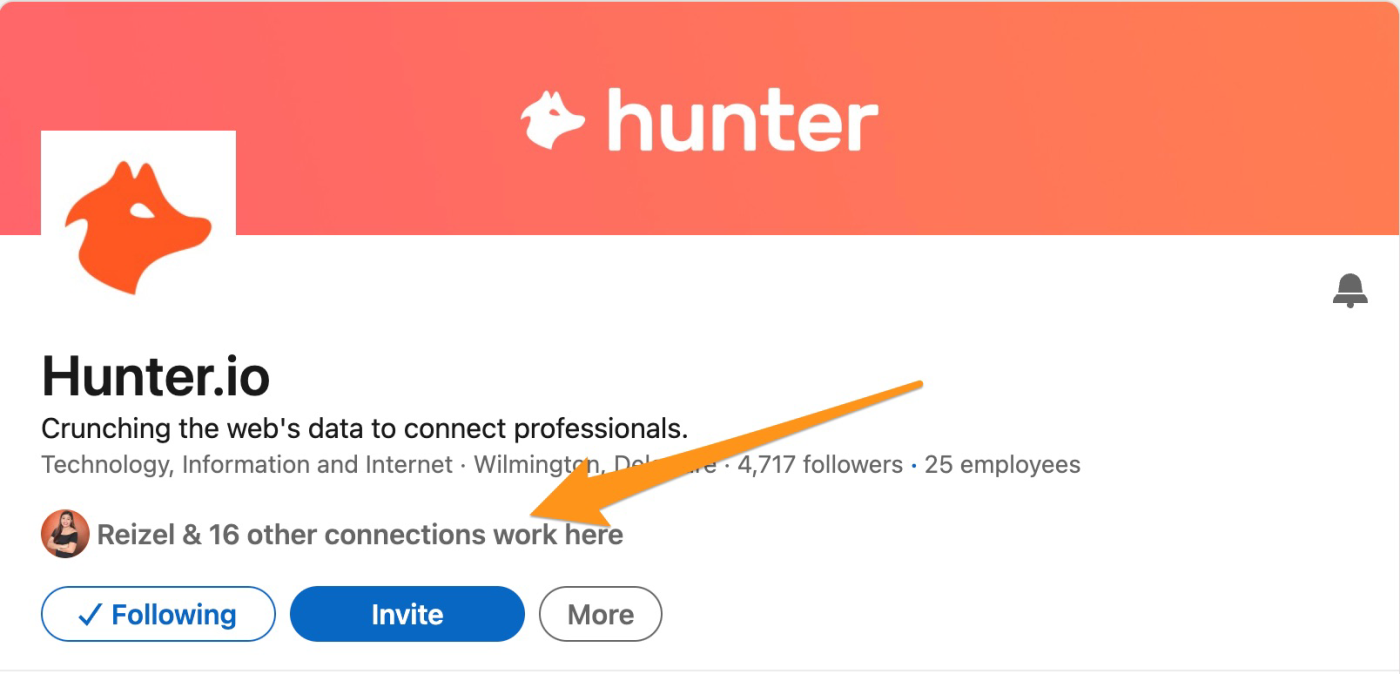
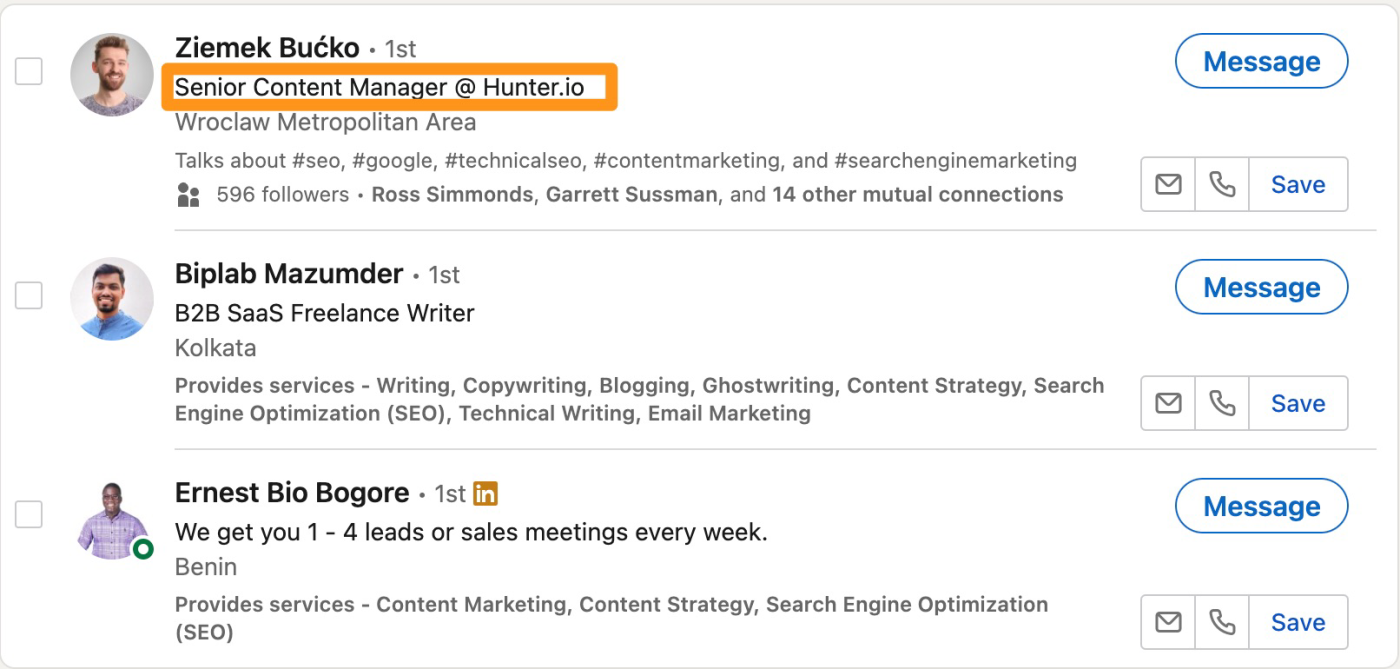
This approach works, but it's time-consuming since you can only use one keyword at a time as a filter. Alternatively, you can outsource the contact lookup part (check out Ahrefs Link Building Course).
Step 3: Find and verify contact information
Sending emails to invalid email addresses will damage your deliverability rates, making it harder for emails to land in the primary inbox. So once you identify decision-makers, finding valid email addresses is the next step.
At Hunter, we use our own Email Finder tool to automate the email-finding process. All you have to do is add the prospect's full name and the company domain, and Hunter will do the rest.
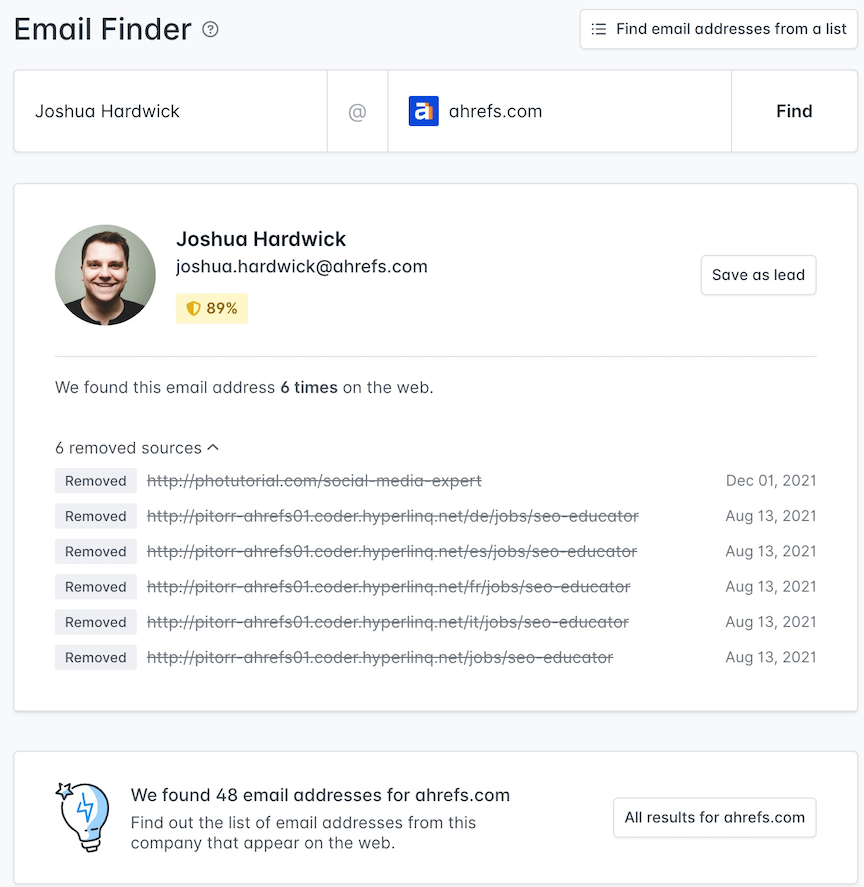
You could also use the Bulk Email Finder if you have a huge list of prospects. It allows you to upload a .csv file with the prospects' full names and domain names, and then returns valid emails in seconds.
If you're using Hunter's Email Finder to find your email addresses, they'll already be validated; but if you found them using other methods, make sure you validate them using the Email Verifier. When you upload a .csv file into Hunter Bulk Verifier, you'll get validity scores for the email addresses.
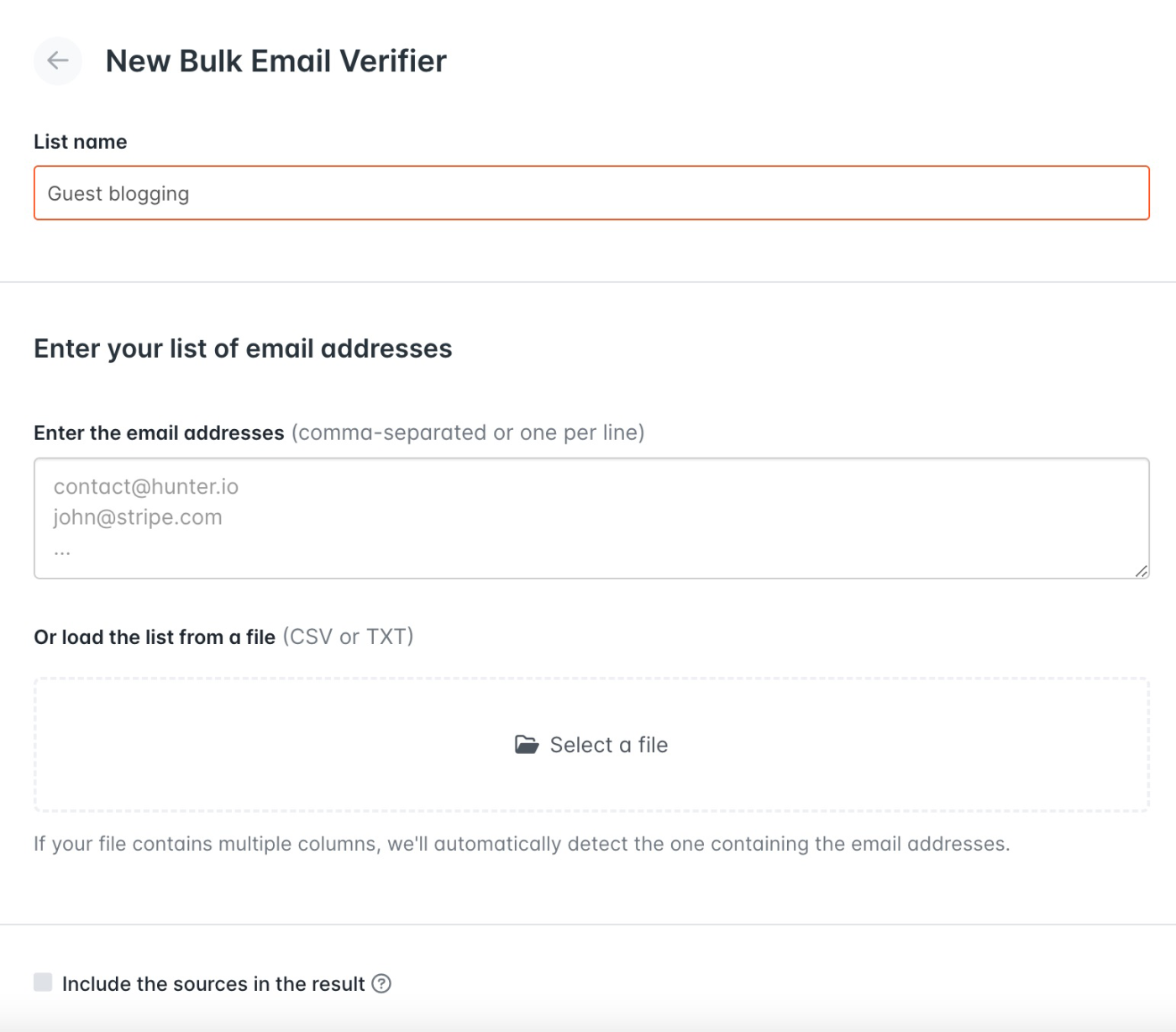
I recommend reaching out only to "valid" email addresses with a 90% or higher confidence score. As you warm up your domain, you can lower the confidence score benchmark, but never go below 70%.
In case you can't find an alternative email address with a higher confidence score, I suggest reaching out through a different channel to keep your bounce rate under control.
Step 4: Engage with prospects before outreach
Engaging with your prospects before pitching a guest post sounds like a lot of work, but this differentiates you from other folks in their inbox.
Before sending your emails, connect with your prospects on LinkedIn or other channels where they're active, and engage with their content. If they're active on LinkedIn, pick something from their popular posts and create a personalized connection request.
Here's an example:
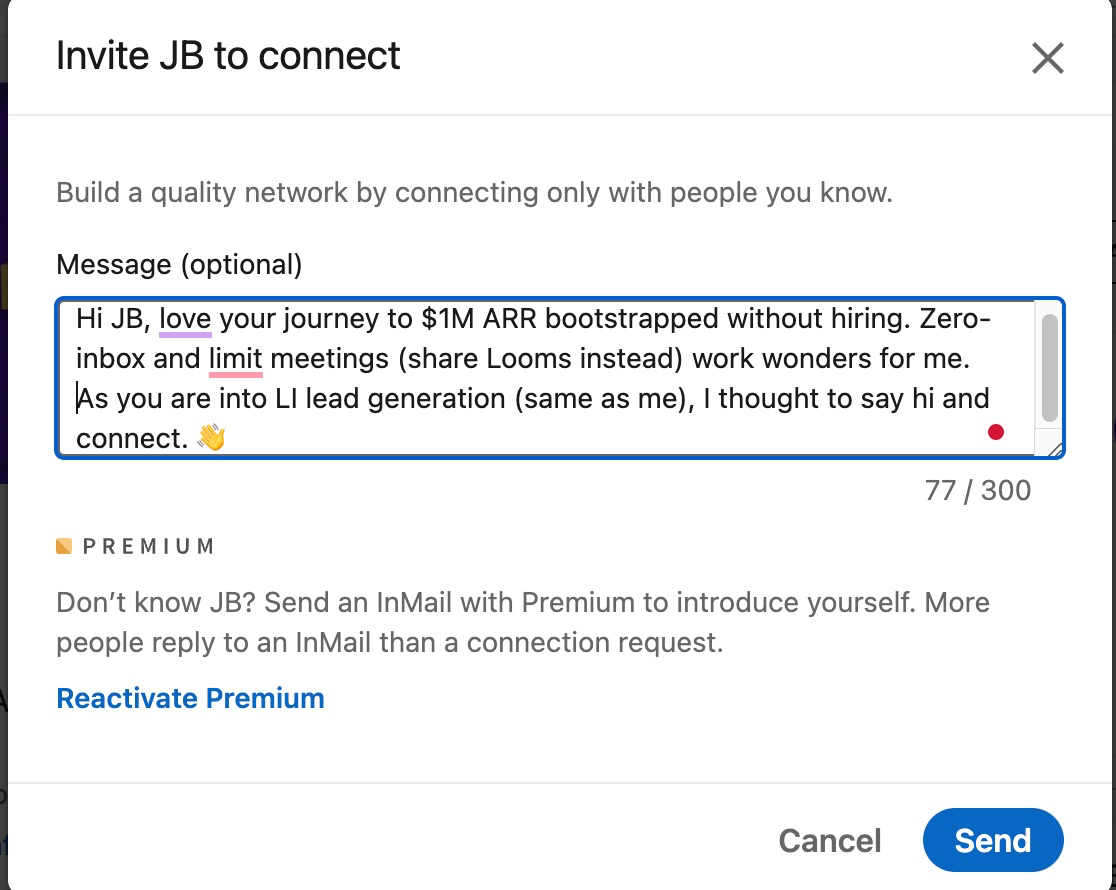
Once they accept your connection request, don't just pitch right out of the gate. Engage with their content and add value through comments.
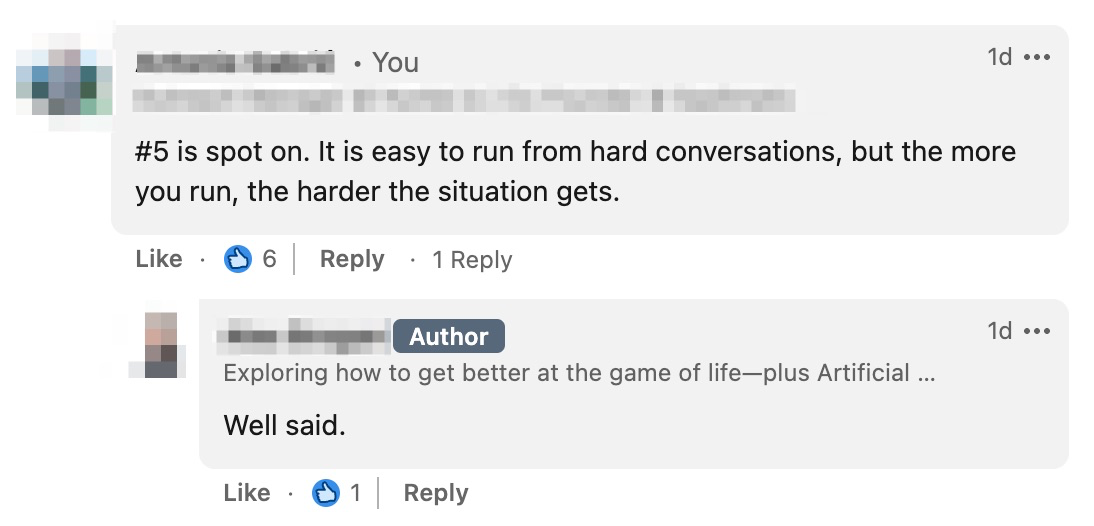
Add comments on relevant posts consistently, and people will remember you. I usually send a personalized message after a week or two of engagement.
Here's an example for a prospect who writes about SEO and link building:

The hardest part of successful guest blogging is building relationships with the right people, so taking your time to warm prospects before pitching your ideas is crucial for successful campaigns.
Step 5: Write a compelling outreach sequence
Most outreach emails look like this:
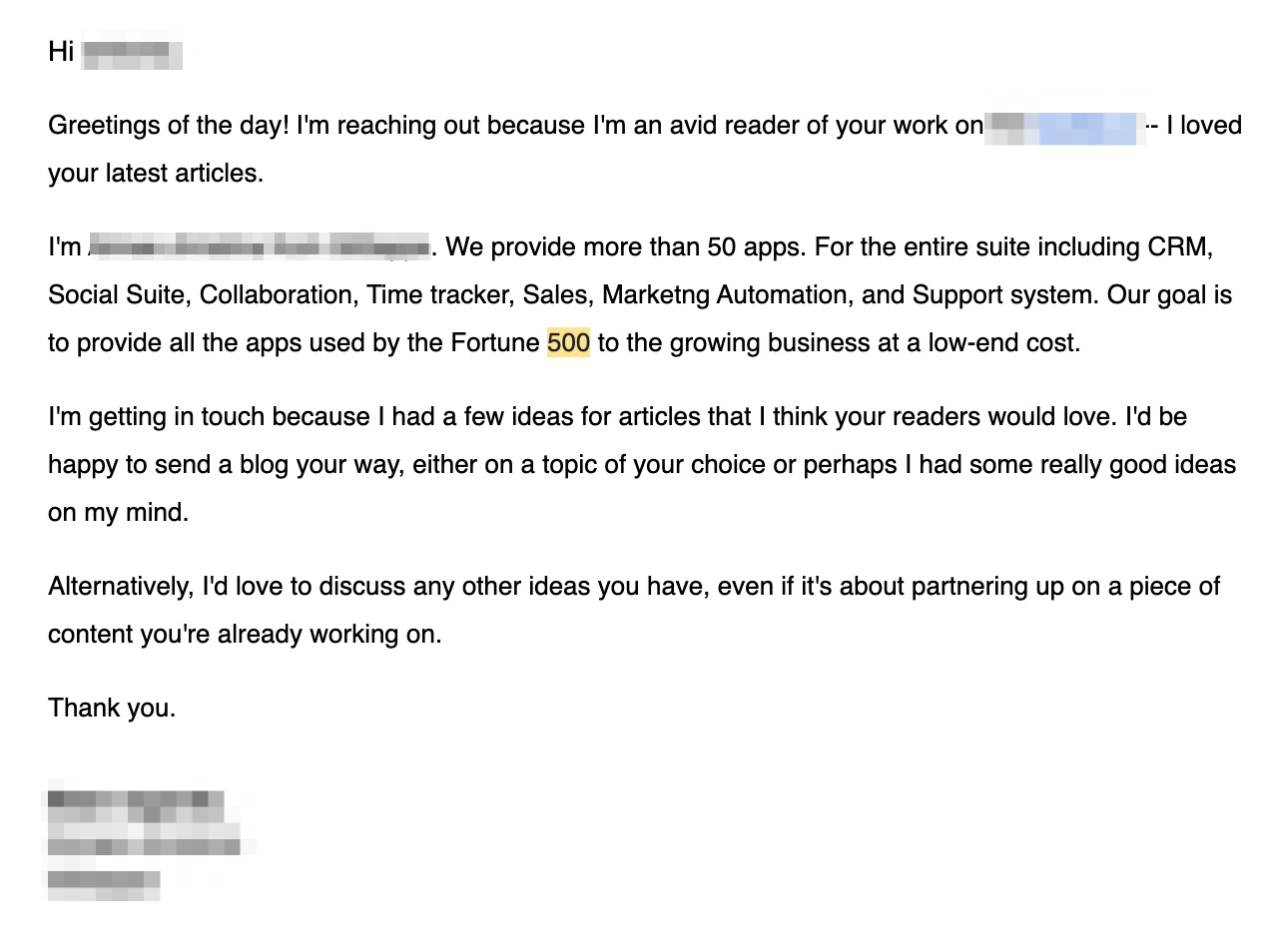
This email was clearly blasted to a ton of people, and the sender mostly talks about themselves, which isn't what cold emails are about. Instead, you should invest time into prospect research to personalize your emails.
Here's one of the templates that worked well for me:
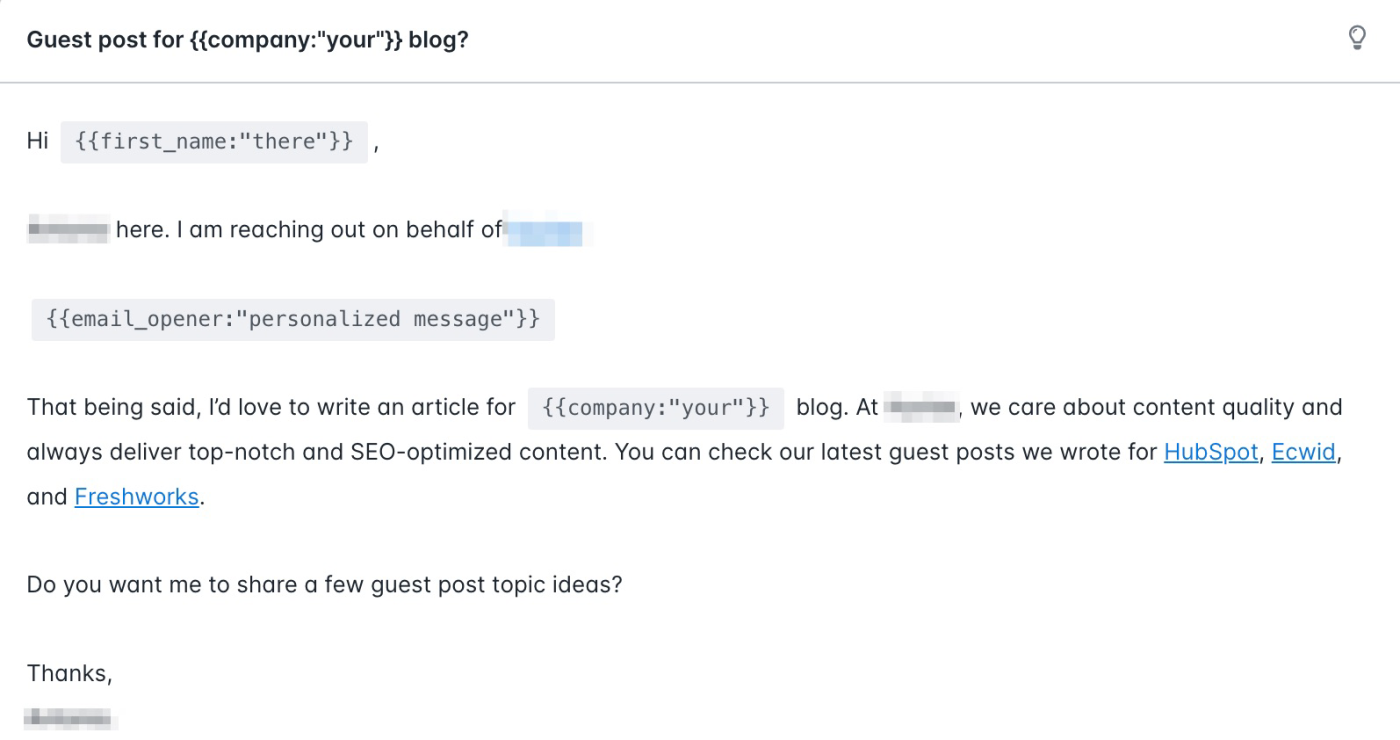
The email is simple, short, and personalized. I start it with a quick introduction, followed by a personalized icebreaker, a portfolio of relevant samples, and a clear and direct ending.
To recap:
Write a short and clear—but personalized—subject line. You can use the recipient's name or company name, and make sure that the subject line communicates the purpose of your email.
Invest time in writing personalized email openers. It shows the recipient that you did your research and the email is intended only for them. After all, you decided to message them instead of hundreds of other prospects—make it clear why.
Share your previous published work. Share your best work related to the prospect's industry. If they strictly focus on outbound marketing, sharing featured work about inbound marketing doesn't add much value.
Write a clear CTA. Some marketers pitch guest post titles in the initial email. I tried that, but the time investment doesn't usually pay off. Just make it simple and ask something in line with "Would you mind hearing a few topics?"
Extra step: follow-up
People get busy, and even if you write the best pitch in the history of pitching, it doesn't guarantee the recipient will respond (or even open your email). That's where follow-ups come in.
According to Backlinko, follow-ups can boost replies by 65.8%, and my personal experience definitely supports that figure. Following up can turn a total flop into a successful campaign.

When writing follow-up emails, don't just write, "Hey, did my last email reach you?" Instead, strive to add additional value with follow-ups. Here's how I do it:
3 days after the initial email: Share the metrics for some of the keywords you'd like to cover based on a content gap analysis.
3 days after the first follow-up: Ask if they can connect you with the person who manages content in their company.
(If you haven't done this before) Send a personalized LinkedIn connection request.
I recommend sending all the follow-ups in the same email thread so the recipient sees them all in the same context.
Step 6: Pitch your best idea
You're almost there. Once you get in touch with the key decision-makers and they show interest, it's time to send a pitch they can't reject.
My motto is: Provide value by saving them time. Ideally, you should try to do the editor's job for them—analyze the topic and do the keyword research. If you can demonstrate your pitch will benefit the prospect in the long run, then your foot is already in the door.
I use Ahrefs' Content Gap tool to get loads of ideas for topics that the prospect's competitors are ranking for but the prospect isn't. These are gold mines when it comes to pitching guest posts. Even though the prospect might already be aware of the content gap, they'll often gladly outsource covering it.
You can further filter the "gap" keywords to include only a specific word—for example, "email"—to get the keywords you're knowledgeable about and that overlap with the interests of your audience.
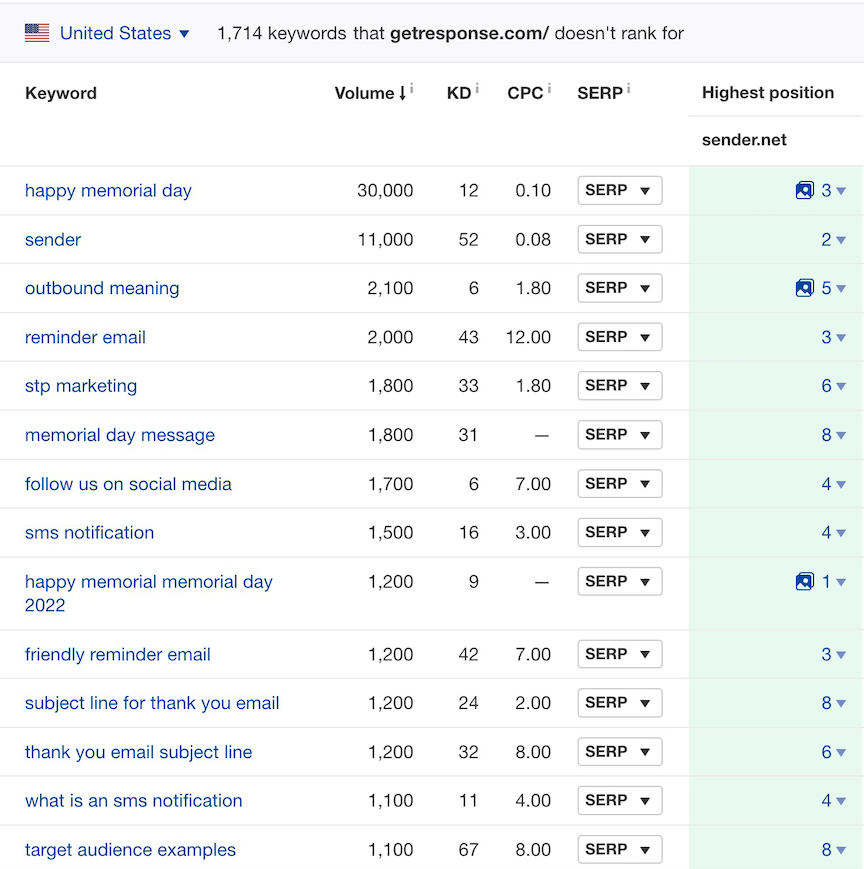
Once you have a keyword with a good search volume and lower keyword difficulty (KD), you should double-check that the prospect's website doesn't already cover that keyword. If there are no matches, you've struck gold. The next step is to brainstorm article titles that will catch the prospect's attention.
You can use Ahrefs' Content Explorer to look up competing articles:
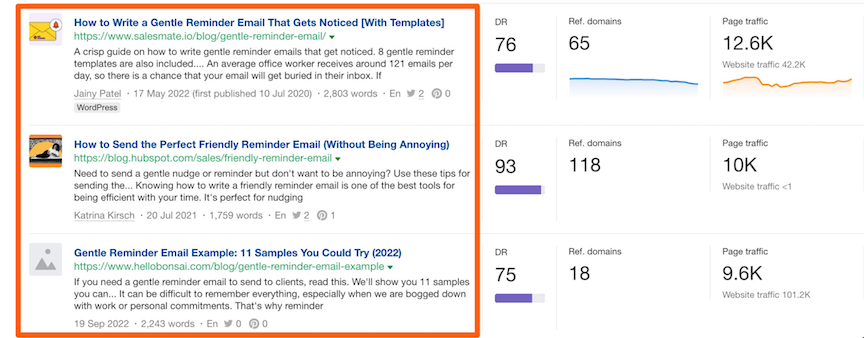
Choose the ones you like the most and feed them to ChatGPT to generate unique ideas:

Of course, use your own judgment and edit the titles. ChatGPT is just your brainstorming partner.
Once you have the target keyword and some ideas for the title, it's time to craft an email. Something like this works for me (the last title got published):
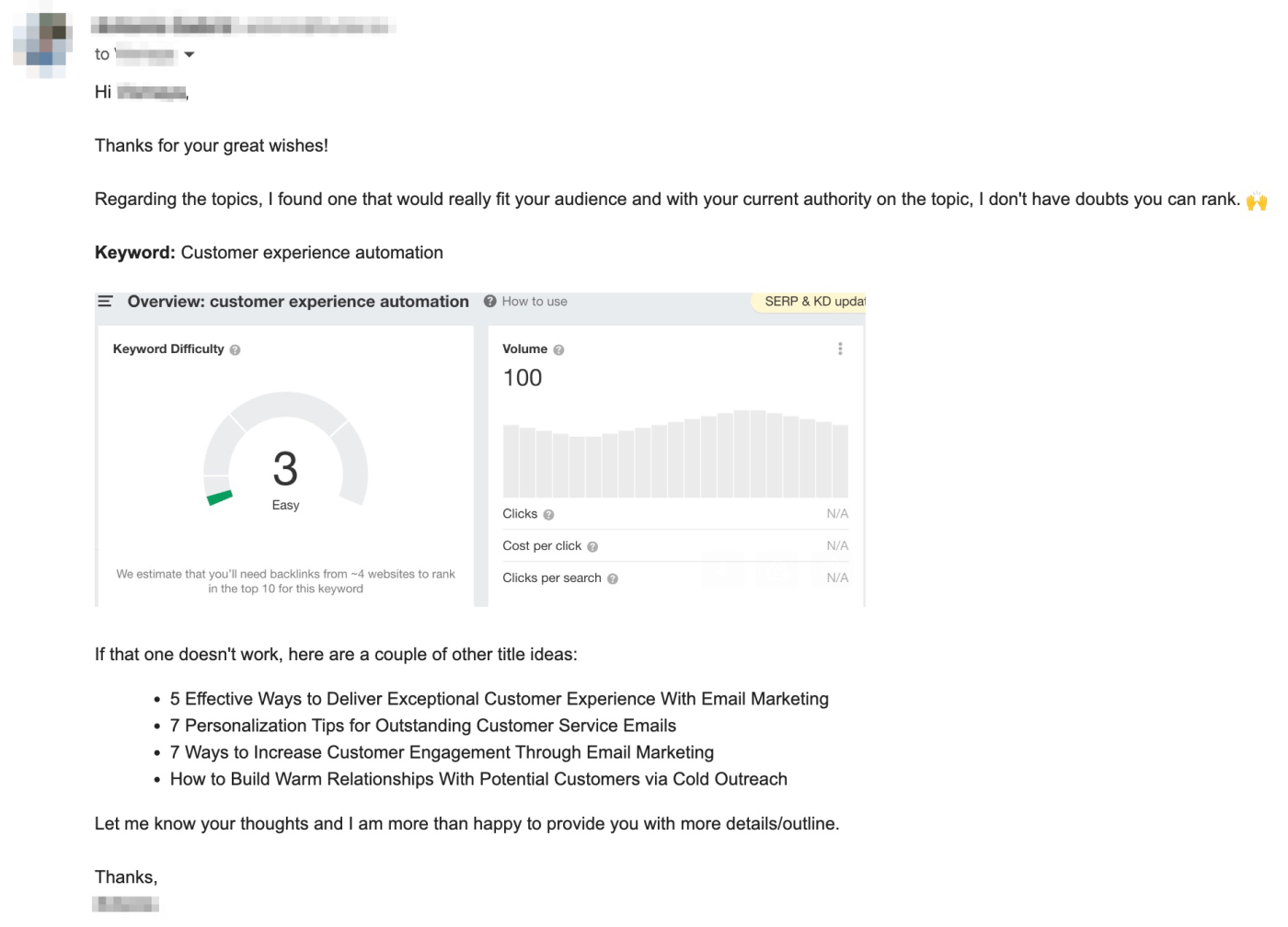
Step 7: Form partnerships with guest bloggers
Forming and nurturing relationships with active guest bloggers is crucial for scaling backlink velocity. If you can share your drafts with other guest bloggers and let them add relevant links, in most cases, they'll reciprocate. It gives you leverage to build more relevant backlinks from authority domains.
You start building this process by identifying businesses with overlapping audiences that aren't your direct competitors. I collect a list of websites that are actively building backlinks and then identify the people managing link building processes.
Craft an email template, and send those emails—you'll get a nice list of partners who actively publish guest posts in no time. Here's an example:
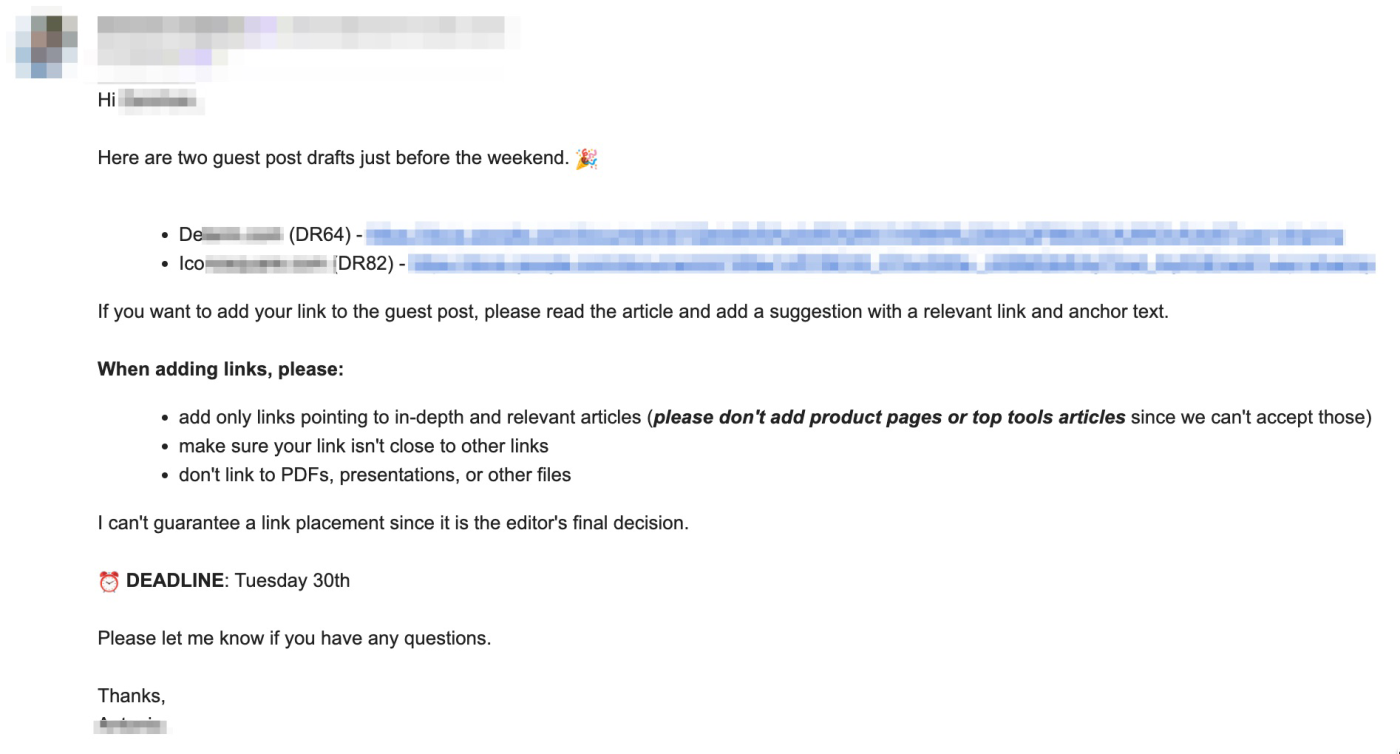
If you write 10 guest posts per month and add 1-2 links to your domain and 3 backlinks to partners, that results in 10-20 backlinks to your domain + 30 backlinks to partners (who will ideally return the favor). So, from 10 guest posts, you might get anywhere between 25 and 50 backlinks.

Extra advice: Exchange editor contact info
Since your partners actively publish guest posts, they already have connections with the right people who published their guest posts. That's an excellent opportunity to skyrocket your success rate without prospecting and finding the contacts.
I created a simple spreadsheet with all our published guest posts and domain metrics and sent it to our partners. If they're interested in a specific domain, they can mark it, and I'll share the contact information or even make an introduction with the right person.
A successful guest blogging campaign
This was one of our most successful guest blogging campaigns. I sent 102 emails and got 38% open rates, resulting in 26 guest post opportunities.

To get featured on websites that help establish authority and brand awareness, you need to identify relevant prospects, find and engage with decision-makers, craft irresistible pitches, and form partnerships to scale your guest blogging efforts.
Have questions? Ping me on LinkedIn.
Related reading:
This was a guest post by Antonio Gabrić, outreach manager at Hunter. Want to see your work on the Zapier blog? Read our guidelines, and get in touch.






